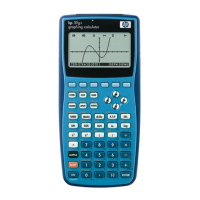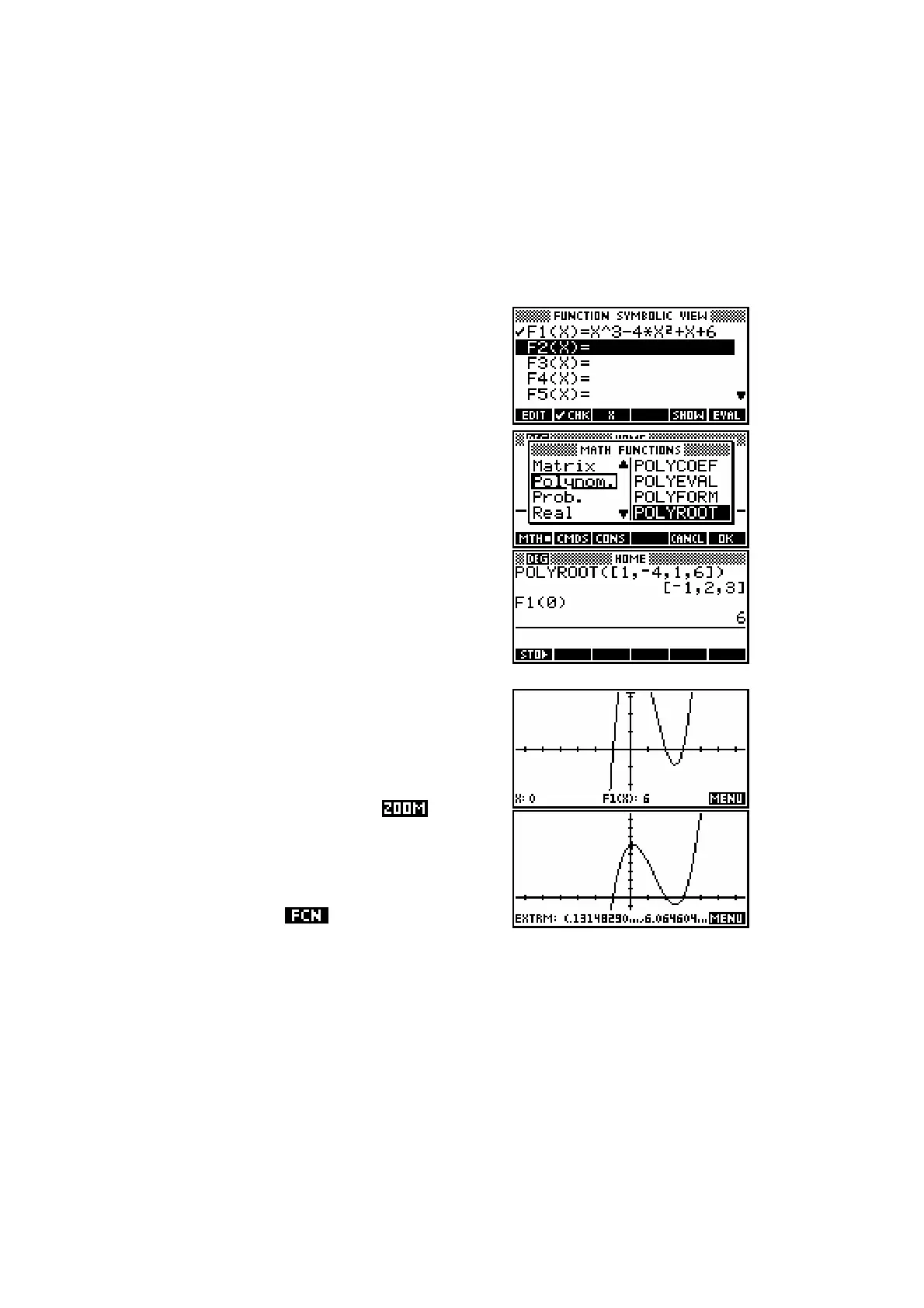286
F
F
i
i
n
n
d
d
i
i
n
n
g
g
c
c
r
r
i
i
t
t
i
i
c
c
a
a
l
l
p
p
o
o
i
i
n
n
t
t
s
s
a
a
n
n
d
d
g
g
r
r
a
a
p
p
h
h
i
i
n
n
g
g
a
a
p
p
o
o
l
l
y
y
n
n
o
o
m
m
i
i
a
a
l
l
For the function
32
() 4 6fx x x x=− ++…
(i) find the intercepts.
(ii) find the turning points.
(iii) draw a sketch graph showing this information.
(iv) find the area under the curve between the two turning points.
Step 1. Enter the function into the SYMB view
of the Function aplet, so it is available
for plotting.
Step 2. Use the POLYROOT function to find the
roots. This function is in the MATH
menu in the Polynom. group.
The results show that the x intercepts
are
(1,0),(2,0)−
and
(3,0)
. The y
intercept is found by evaluating F1(0)
in the HOME view giving the point (0,6).
Step 3. Switching to the PLOT view via VIEWS
- Decimal, you will find that the
function does not display as well as it
could. Since it is the y axis that is not
displaying enough, we will use the ‘Y-
Zoom Out’ option in the menu
after first setting the Zoom factors
to 2 rather than 4 (which is too drastic).
Now use the pop-up menu to find
the Extremum (both left and right).
The snapshot right shows the left-hand turning point of (0.131,6.065).

